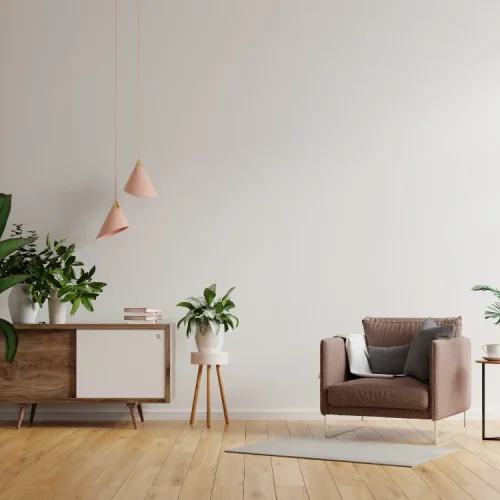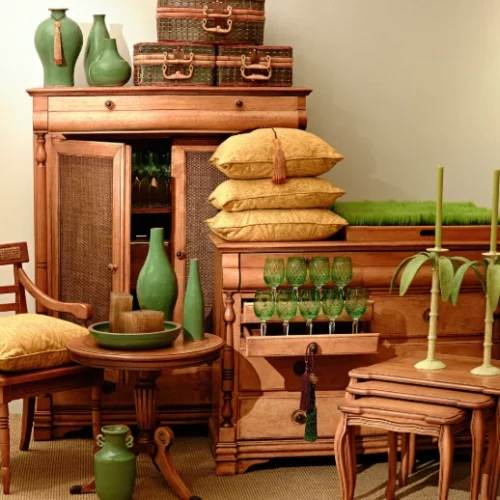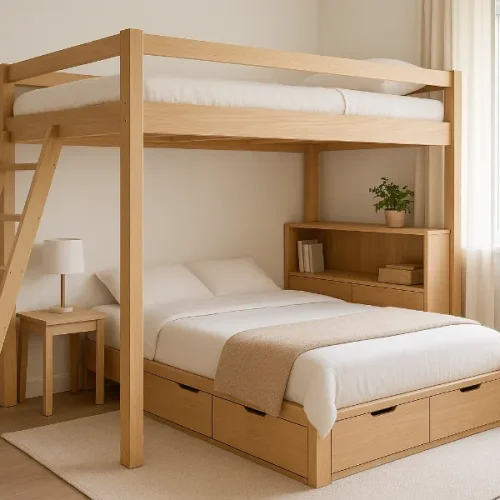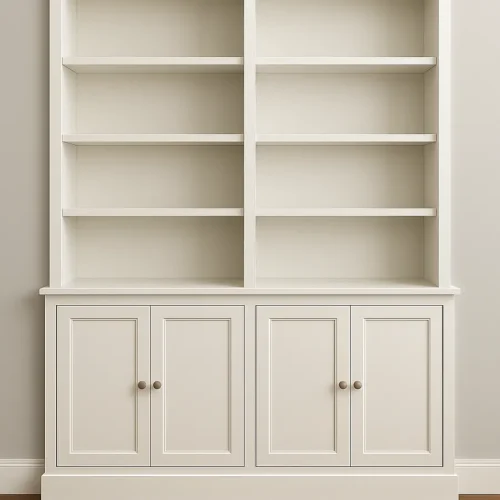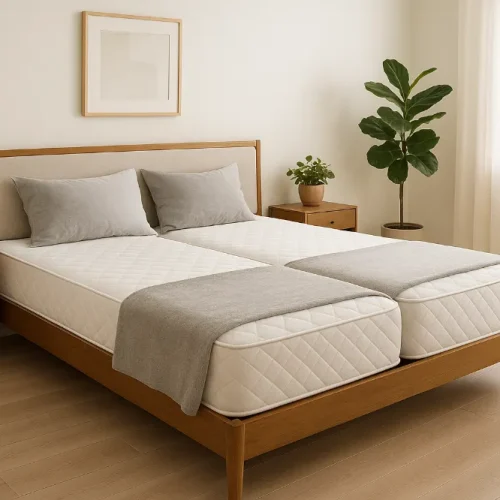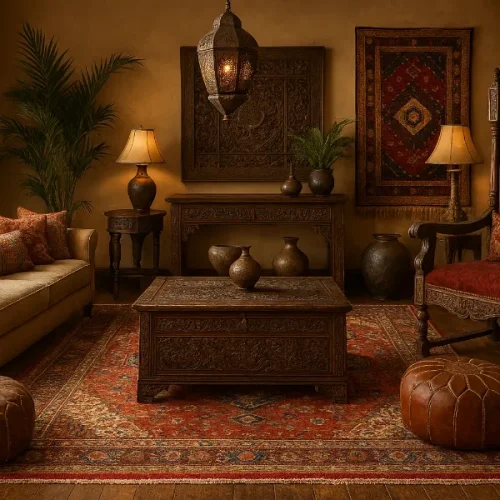If you’ve ever tried to move a heavy sofa, a fully stocked bookshelf, or even a vintage dresser, you already know the struggle. This is where the types of furniture casters you choose can completely change the way you live with your furniture. Casters aren’t just little wheels on the bottom of your favorite chair—they’re design choices, functional upgrades, and sometimes even lifesavers when it comes to protecting your floors and your back. Let’s dive deep into the world of casters and uncover which ones are best suited for your home.
What Are Furniture Casters?
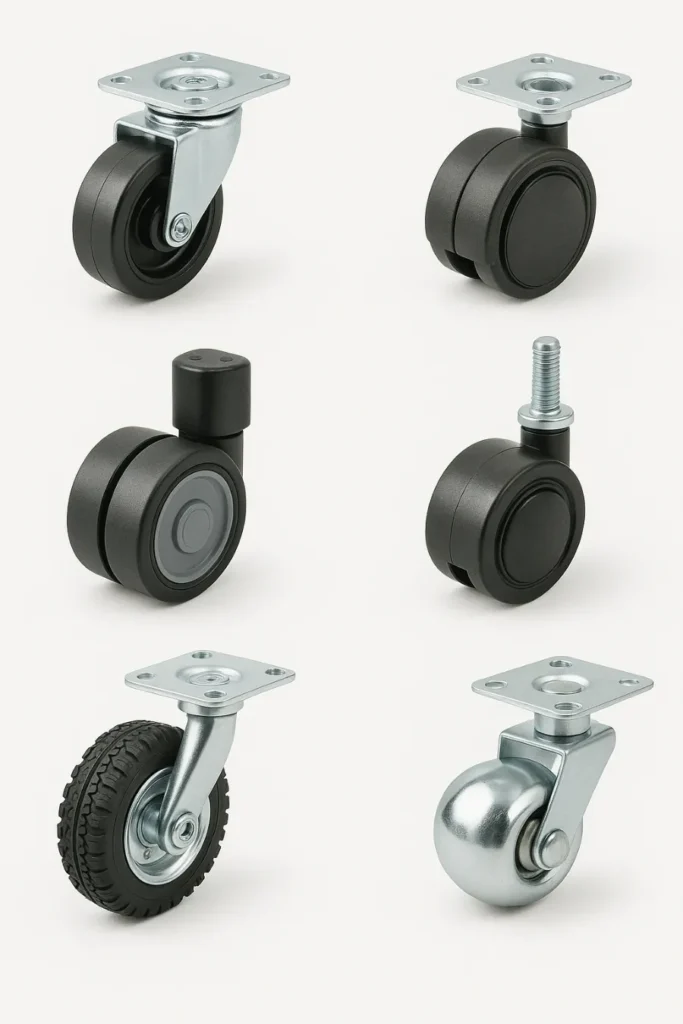
At their simplest, casters are small wheels attached to the bottom of furniture pieces. They consist of two key parts: the wheel and the mounting bracket. Together, they transform even the heaviest furniture into something movable with a gentle push. You’ll find them under sofas, cabinets, tables, rolling carts, and even antique pieces. Beyond their function, many modern and vintage casters are designed to be part of the furniture’s aesthetic appeal, blending seamlessly into the style of a piece.
Key Dimensions to Consider
Before exploring the different types of furniture casters, it’s important to understand how size influences performance:
- Overall height: The distance from the bottom of the wheel to the top of the mounting bracket. This affects how high your furniture sits above the floor.
- Wheel diameter: Larger diameters generally support heavier loads and roll more smoothly.
- Wheel width (tread width): A wider wheel spreads the weight better, reducing floor damage and noise.
These measurements directly impact comfort, stability, and how well your casters protect your flooring.
Main Types of Furniture Casters
There’s no single “best” caster—it depends on what you need. Here are the most common types of furniture casters you’ll encounter:
Plate Mount Casters
These casters use a flat plate to secure to the furniture. They’re sturdy, provide great stability, and are perfect for heavier items like wardrobes or sideboards.
Stem Mount Casters
Instead of a plate, these casters have a stem that inserts directly into the furniture leg. They’re often seen on chairs and lighter furniture pieces, offering a clean, minimal look.
Rigid Casters
Rigid casters move only in straight lines. They’re excellent for controlled movement—like sliding a dresser forward to clean behind it—but don’t expect much maneuverability.
Swivel Casters
The opposite of rigid casters, swivel casters rotate 360 degrees, giving you complete freedom to move in any direction. They’re ideal for chairs, rolling carts, and furniture in tight spaces.
Roller Casters
Roller casters use small cylindrical rollers instead of traditional wheels. They’re low-profile and especially useful under work tables or cabinets where height matters.
Retractable Casters
A modern innovation, retractable casters stay hidden until you need them. For example, some sofas now come with recessed casters that pop out only when you want to move them. Stylish and practical.
Vintage Casters: Blending Old and New
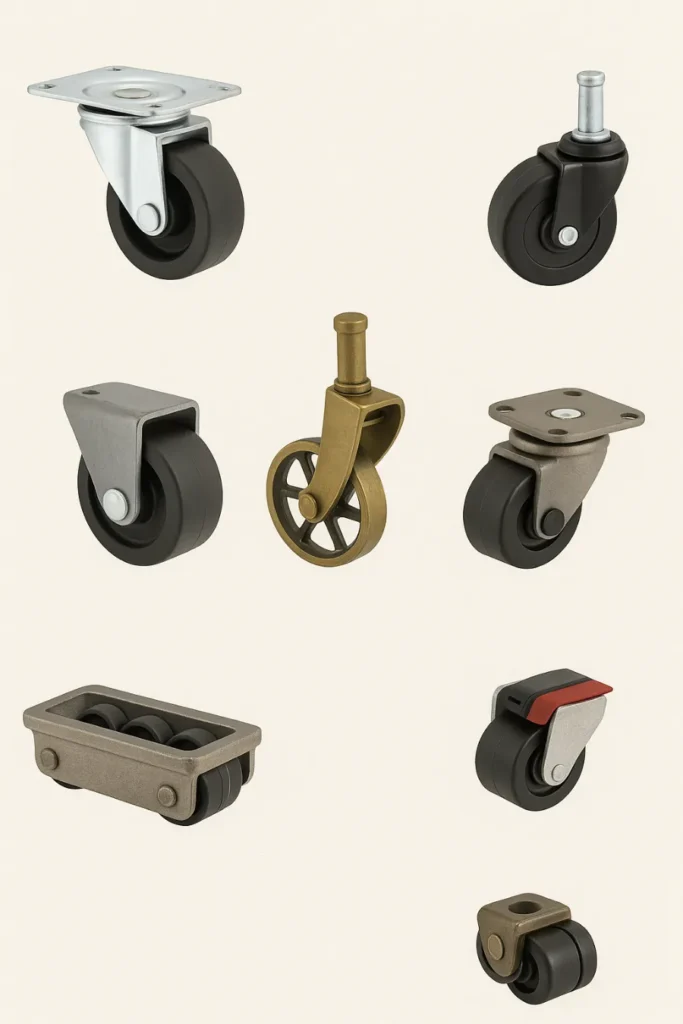
Vintage casters deserve a special mention. These casters often feature decorative designs with brass, porcelain, or cast iron wheels. While antique versions sometimes lacked durability, modern reproductions combine old-world charm with today’s performance. They’re especially popular in industrial, rustic, or mid-century modern interiors.
Why choose vintage casters?
- They enhance the character of your furniture.
- Many modern versions are designed to protect wood and tile floors.
- They allow you to balance style with everyday practicality.
Materials for Furniture Caster Wheels
Choosing the right material is just as important as the caster type. Each material has unique strengths:
- Rubber: Soft, floor-friendly, and quiet. Perfect for hardwood and tile.
- Polyurethane: The “all-terrain” option—durable, non-marking, and able to handle heavy loads.
- Nylon: Tough, resistant to chemicals, and great for both hard and soft floors.
- Metal (steel or cast iron): Ultra-strong but can damage floors if not paired with pads. Best for heavy-duty industrial-style furniture.
- Plastic: Affordable but not long-lasting. Works best for lightweight pieces.
Caster Features to Look For
Beyond the basics, consider extra features when shopping for types of furniture casters:
- Braking vs. non-braking: Brakes keep furniture stable when you don’t want it rolling around. Essential for tables and sofas.
- Adjustable height: Some casters let you fine-tune furniture height for uneven floors.
- Locking systems: High-quality locks secure both the wheel and swivel action, giving you full control.
Choosing the Right Furniture Caster
Here’s how to narrow down your options:
- Floor type: Use softer wheels like rubber for hardwood; harder wheels like nylon for concrete.
- Furniture weight: Heavy furniture requires larger wheels and stronger materials.
- Maneuverability: Swivel casters for flexibility; rigid for straight-line control.
- Noise concerns: Larger wheels and softer materials reduce sound.
- Aesthetic: Vintage casters for antique pieces, sleek metal for modern designs.
Expert Tips for Installation and Design
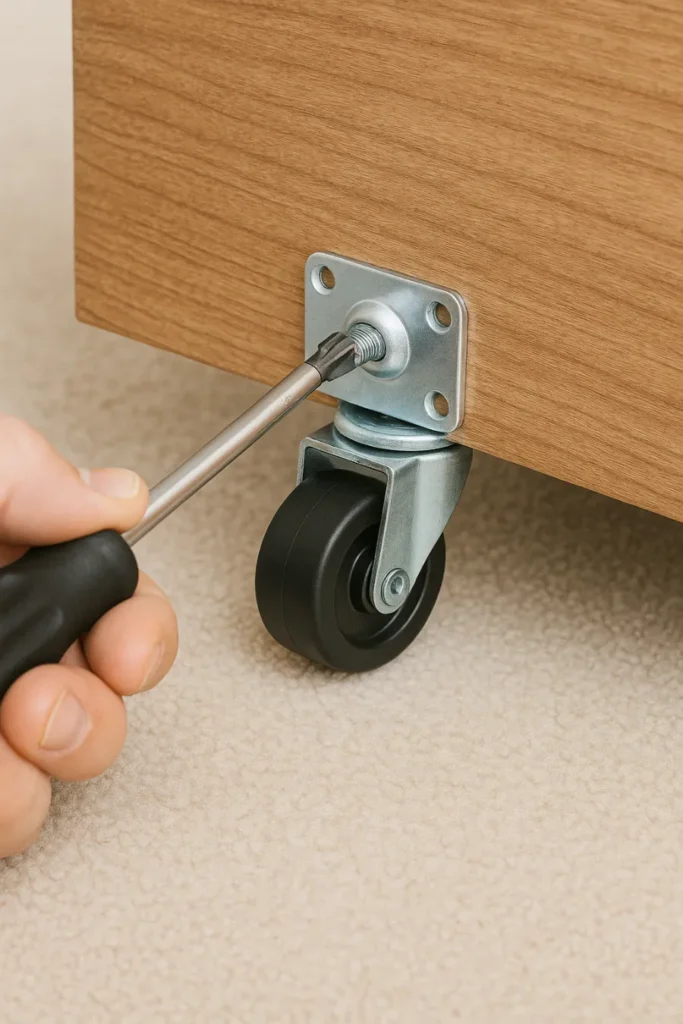
Installing casters may seem like an afterthought, but a little planning goes a long way:
- Place casters at furniture corners for maximum stability.
- Conceal casters behind legs or skirting boards if you prefer a clean look.
- Check that swivel casters have clearance to rotate fully.
- Measure caster height carefully to avoid awkward “floating” furniture.
- For locking casters, ensure locks are easy to reach once installed.
Conclusion
The right types of furniture casters aren’t just about mobility—they’re about protecting your floors, improving functionality, and even enhancing the style of your furniture. Whether you’re choosing sleek modern designs, decorative vintage casters, or heavy-duty options, the right decision will make your home more practical and stylish. Next time you’re rearranging your living room or upgrading a piece of furniture, remember: casters keep everything rolling smoothly—literally and figuratively.


